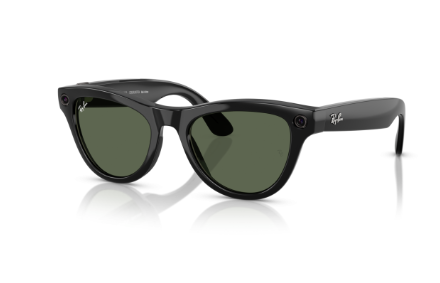From Ray-Bans to Reality: How Smart Glasses Are Quietly Becoming Everyday Tech
A few years ago, smart glasses were dismissed as a Silicon Valley experiment—expensive, awkward, and destined for gadget graveyards. Fast-forward to 2025, and the story is different. With Meta’s Ray-Ban smart glasses now on shelves in India and Oakley’s special edition in select markets, wearable AI is slipping into daily life more seamlessly than anyone expected.
Take a walk through any metro and you might already see them in action. These glasses can take photos with a discreet 12 MP camera, record video in 3K clarity, and stream directly to social platforms. But the real magic lies in the invisible layer: built-in AI assistance. Ask your glasses for directions, and they guide you without reaching for your phone. Need to understand a menu in Spanish? Live translation beams it back in English right in your ear. For the first time, technology isn’t just in your pocket—it’s woven into your field of view.
In India, where the Ray-Ban Meta line starts at ₹29,900, adoption is being driven not only by early adopters but also by professionals and creators who see the utility. A chef in Mumbai uses them to record recipe demos hands-free; a student in Bengaluru translates German lecture notes in real time; a vlogger in Delhi live streams straight from his glasses without bulky equipment. It’s a quiet revolution—one where utility, not hype, is pulling wearables into everyday use.
And this is only the beginning. Meta is preparing to launch its next leap—codenamed Celeste (or Hypernova)—expected to feature built-in displays and gesture-based controls. Imagine walking through a city and having navigation arrows float on your street, or checking a text without looking down at your phone. These aren’t sci-fi fantasies anymore—they’re scheduled to be unveiled at Meta’s Connect 2025.
Of course, challenges remain: pricing beyond ₹30,000 keeps them aspirational for most, and long-term battery life still needs breakthroughs. But the momentum is undeniable. Unlike earlier missteps in AR, today’s smart glasses are designed to solve real-world problems—guidance, communication, and convenience—without demanding lifestyle compromises.
The future of computing may not be about smaller screens in our hands, but smarter lenses on our faces. And with India investing heavily in XR ecosystems, from policy to production, it won’t be long before smart glasses go from luxury accessory to daily essential.
Info Box: Smart Glasses in 2025
- Ray-Ban Meta: Available in India, ₹29,900+, 12 MP camera, live translation, AI voice control.
- Oakley Edition: 3K video capture, enhanced battery, global rollout.
- Coming Soon: Meta “Celeste/Hypernova” with display-in-lens and gesture control.





